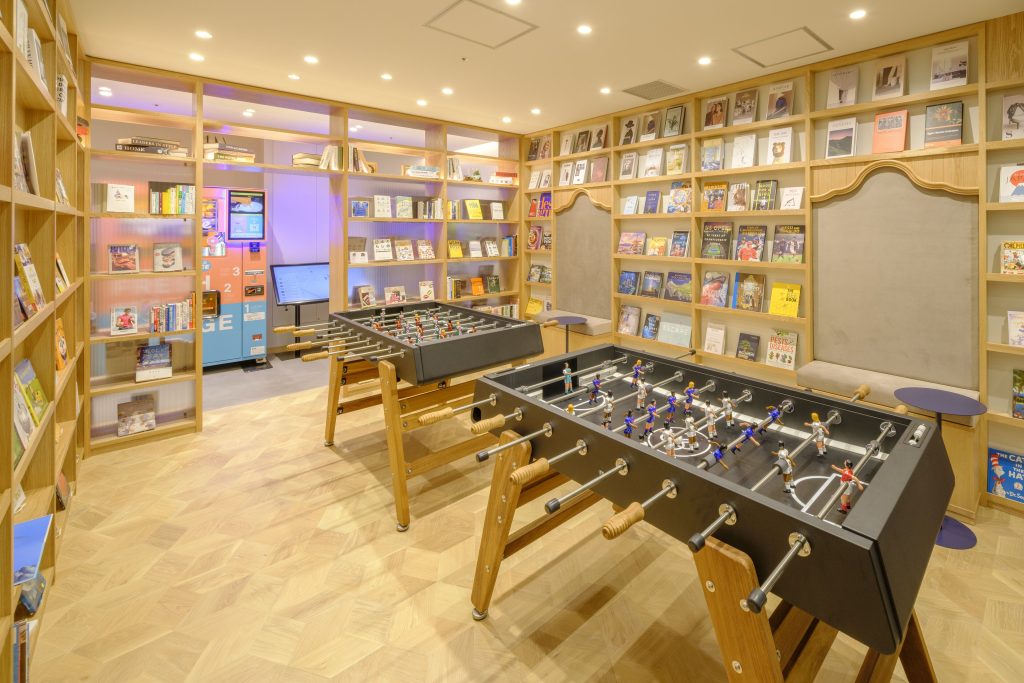When is the Best Time to Visit Tsukiji Market?
Last Updated on October 24, 2025 by Audrey
Looking for a comprehensive guide on the best time to visit Tsukiji Market, and tips to follow?

Tsukiji Fish Market (築地市場, Tsukiji shijō) is one of Japan's largest and most popular fish markets. Located in central Tokyo, this iconic market boasts over 400 shops offering everything from fresh seafood, and delectable snacks, to premium kitchen utensils.
Tsukiji Market is the perfect place to immerse yourself in Japanese culinary traditions, all within a historically significant setting. There's a reason it's one of the top things to do in Tokyo!
In this post, I'll cover everything you need to know about Tsukiji Fish Market, including the Jonai (inner) and Jogai (outer) sections, the best times to visit, and essential tips to make the most of your experience!

Visiting Tsukiji Market
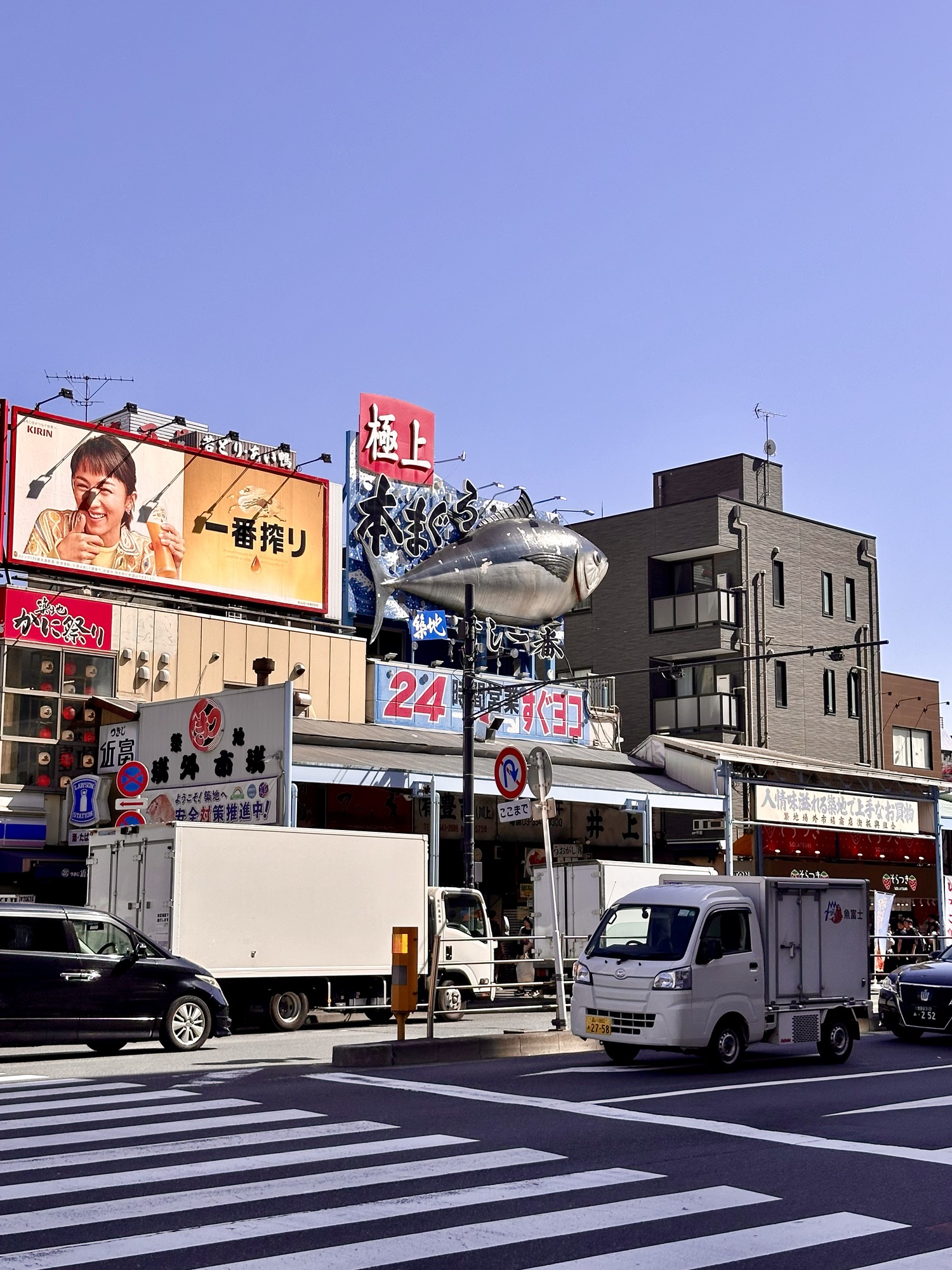
Tsukiji Market has been functioning ever since the Edo period. Established in 1935, Tsukiji Market was built to replace Nihonbashi Market, a thriving fish market that had been operating for 200 years until the Great Kanto Earthquake in 1923 destroyed it.
Since its creation, Tsukiji grew into the world's largest fish market. Now, You may have heard it moving in 2018 to Toyosu. But there's still a fish market in Tsukiji too. Which one are you supposed to go to?
Inner Market vs Outer Market

There have always been two sections of Tsukiji Market. Jonai (the inner market) is where wholesale seafood is sold, catering mostly to professionals. On the other hand, Jogai (the outer market) is for the general public.
After the tourism boom in Japan, tourists flocked to Tsukiji, causing significant overcrowding and inconveniencing the professionals who relied on the market for their business. Initially, strict restrictions were placed on when tourists could enter the inner market. In 2018, a new inner market was established at Toyosu, relocating the wholesale operations.
Now, Tsukiji Fish Market mainly caters to tourists, which has led to higher prices. However, with its charming historic lanes and alleys filled with quaint shops and restaurants, it remains an amazing place to dive into Japanese culture and cuisine.
Personally, I love visiting Tsukiji Fish Market. I see it as an opportunity to experience the lively atmosphere and be introduced to a wide variety of Japanese cuisine. It's a great introduction to Japanese food, where you can try everything at once.

What you can expect to find in Tsukiji Market
🍣 Sushi restaurants
🍜 Ramen stalls
🐟 Vendors: fresh seafood, fruits, vegetables
🍦 Delicious desserts: tanghulu (candied fruit), ice cream, daifuku mochi
🍵 Japanese stables: tea, kombu, nori (seaweed), katsuobushi (bonito flakes)
🔪 Premium Japanese knives and dishware

The best time to visit Tsukiji Market
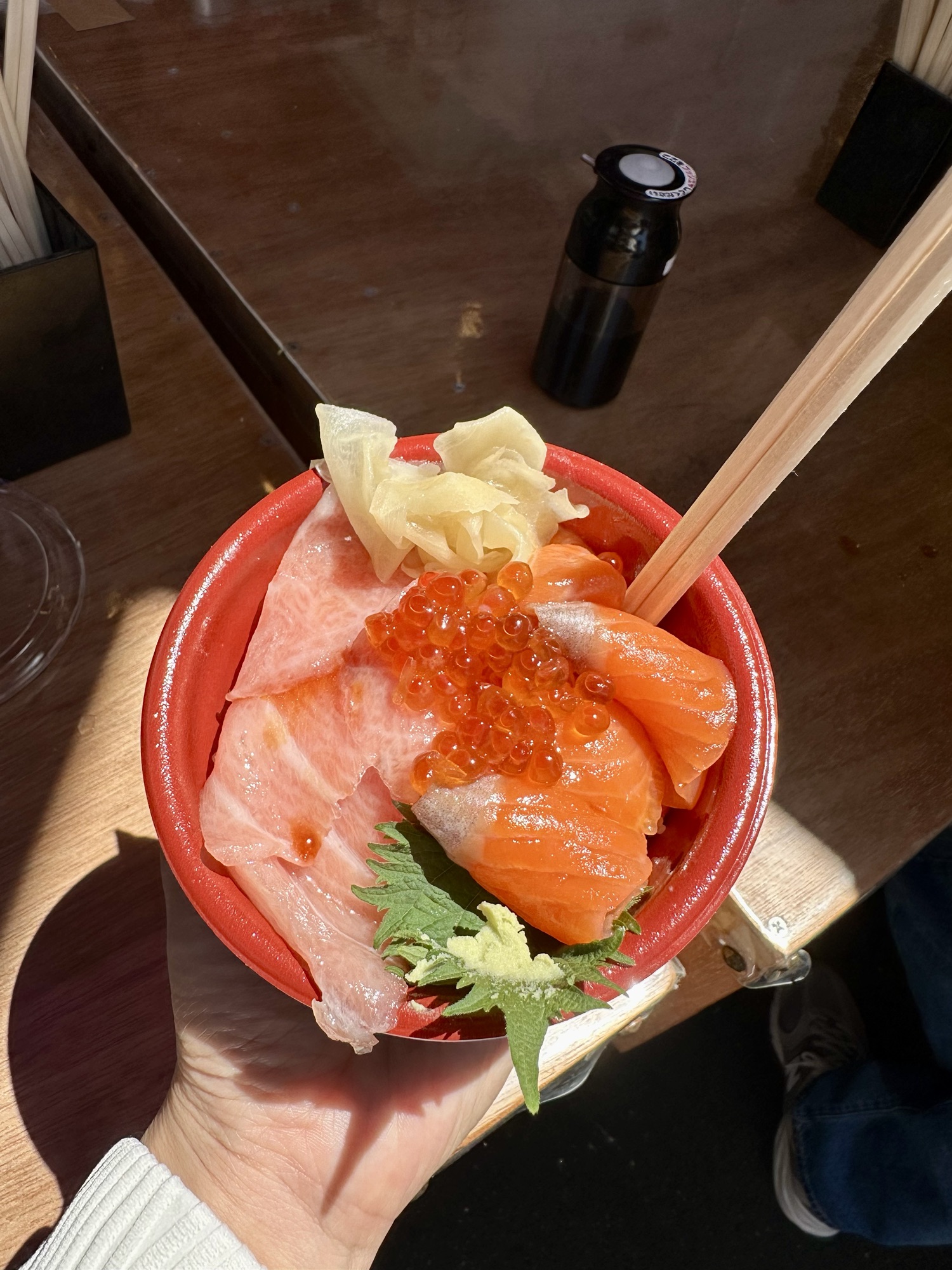
So, what time does Tsukiji Market open? Well, the market doesn't have an official opening and closing time, as each shop operates on its own schedule. However, many shops start opening as early as 5 am, and generally, you’ll find them bustling from 9:00 am to 2:00 pm.
Tsukiji tends to get crowded, especially around 10 am. To avoid the crowds, the best time to visit Tsukiji Market is between 8:00-9:00 am or around 11:00 am for lunch.
On one occasion, we visited at 6 am, and the market was peaceful and quiet, with fewer people around. It was a great time to watch the shops set up, and some stalls were already open, allowing us to purchase food. If you want to know what to eat for breakfast at Tsukiji Market, make sure to check out this post!
Most stores begin closing around 2 pm, although regular restaurants may stay open later.
Many shops are closed on Wednesdays and Sundays, similar to the Toyosu Market. If you prefer to avoid crowds, these might be the best days to visit—just be aware that not all shops will be open. In my experience, a good number of shops still operate, but with shorter hours (typically 10:00 am to 2:00 pm).


tips to know about Tsukiji Market
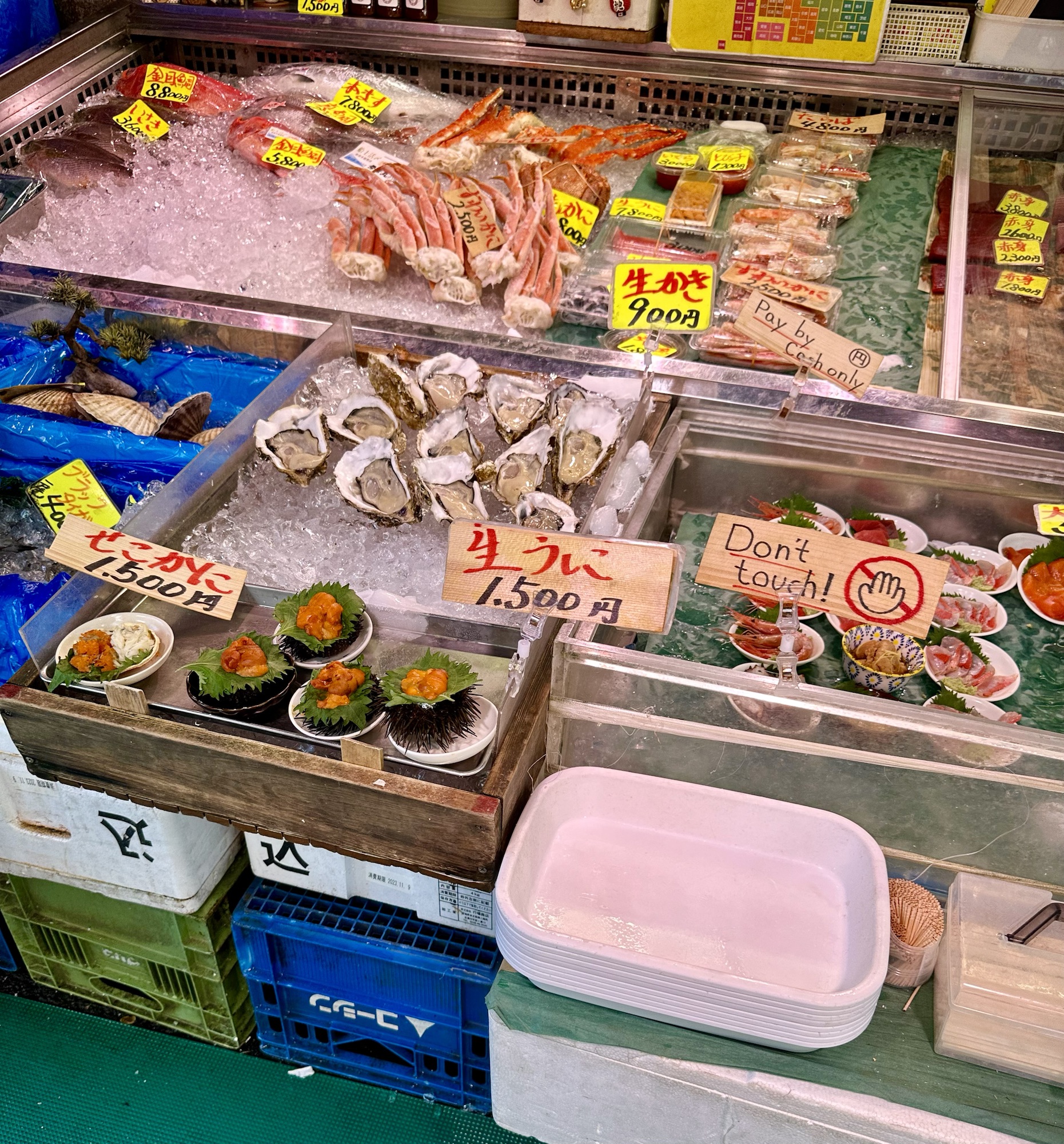
Need help? There is an information center at Plat Tsukiji if you need recommendations, as well as ATMs, a smoking area, or a locker.
Don't eat while walking, it's considered rude. Don't eat right in front of the store either, because they need that space for new customers! There are designated spaces to eat near the store.
Leave your luggage behind. The streets are narrow, and there are a ton of people walking here.
Move in small groups, the streets and shops are narrow. Make sure to hold on to your child's hand if you have children so you don't lose them.
Ask before taking photos of the food. Some vendors do not allow photography, so make sure you're being respectful!
Don't touch the food. These are valuable products for sale, and poking and prodding the produce will lower its value. Ask the shopkeeper first if you want to check something.
Don't try to bargain, it's not a general practice at Tsukiji and is considered rude.
Smoke only in designated areas. The only designated area is at Plat Tsukiji.
Bring some cash. You'll find that not everyone accepts credit cards. Most restaurants will, but you'll want to sample the street food, too!

My favorite foods and shops in Tsukiji Market
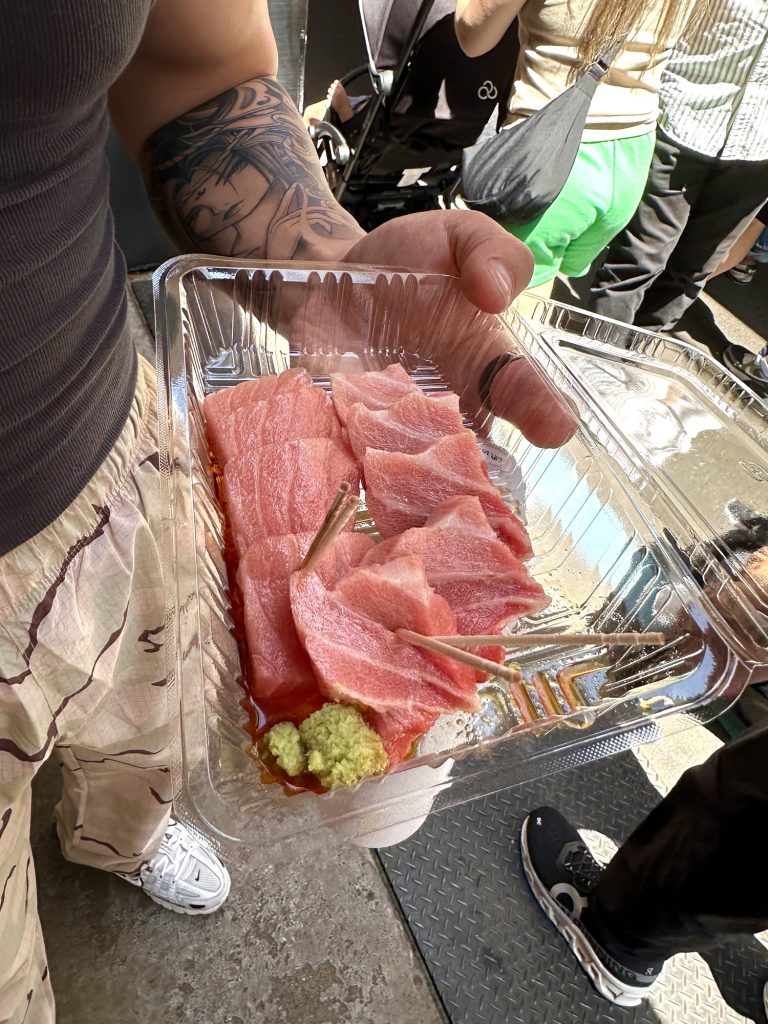
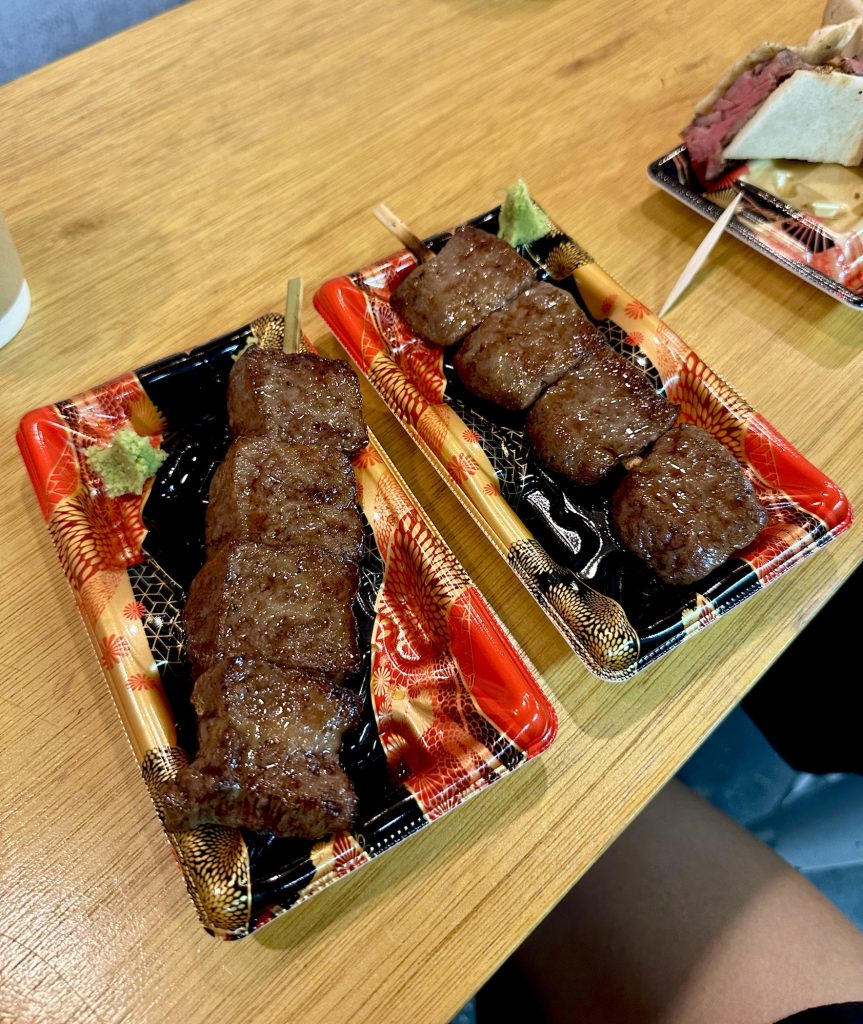
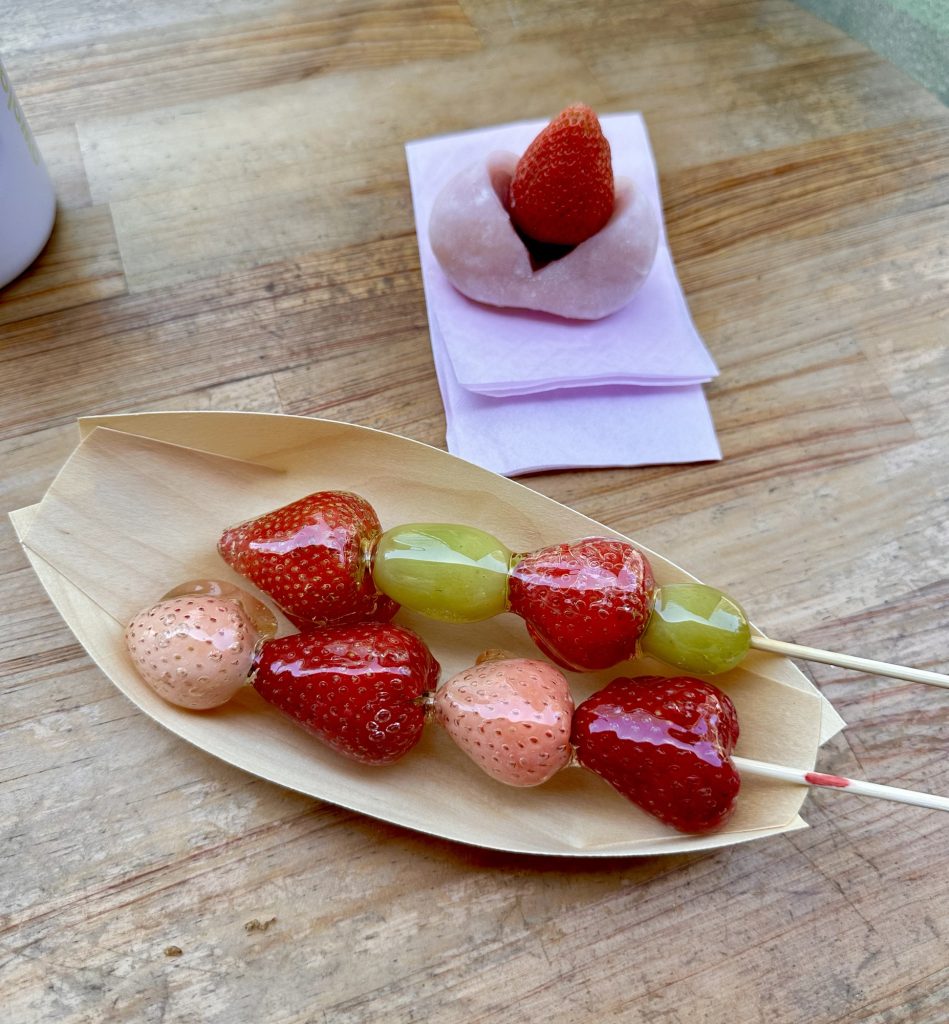
Tsukiji Wine Stand 88: Wagyu sandwiches and skewers
Motodane: Fresh sushi and seafood donburi
Marutama: Delicious peach ice cream!
Ichifuji: Ceramics store where I bought a teapot and dishware sets. (In case you're curious, I had to haul all that stuff back to America, and it was a nightmare).
Solatsuki: A very popular dessert stand known for mochi and tanghulu, fresh fruit with hardened sugar that is a popular street food in Tokyo.
Uogashi Shokudo Food Court: Large food court with a diverse range of cuisines. I got tempura udon for breakfast here, along with fresh sashimi!

Free Map of Best Restaurants and Stores in Tsukiji Market

How to Get to Tsukiji Market
There are two ways to get to Tsukiji Fish Market.
- You can take the Toen Odeo Line to Tsukiji Shijo Station, and exit from the A1 exit.
- Alternatively, you can take the Hibiya Line to Tsukiji Station, and exit from Exit 1 or 2.

Where to stay near Tsukiji market
If you're staying within walking distance, the best time to visit Tsukiji Market won't matter much—you're always just a minute away from a delicious snack!
I personally stayed at Tokyu Stay Tsukiji, the closest hotel to the market, and loved being able to enjoy fresh seafood for breakfast and lunch every day. We were always full and satisfied before heading out to sightsee, and there were plenty of restaurants and shops still open when we returned.
It's truly a foodie’s paradise!
Tokyu Stay Tsukiji ($$)

Initially, we debated whether to stay at Tokyu Stay Ginza or Tokyu Stay Tsukiji. While we loved the idea of being close to the shops, we ultimately chose Tokyu Stay Tsukiji because it was a bit more affordable and still just a short walk from Ginza.
I highly recommend staying near Tsukiji—it’s more budget-friendly than Ginza while still offering a central location.
Beyond the prime location, we enjoyed delicious fresh food at our doorstep, great complimentary amenities (like tea, robes, toothbrushes, etc.), and I loved walking around and soaking in the liveliness of Tsukiji Market every morning.
We were also close enough to Ginza to easily visit the shops every day. Since Tsukiji Market operates during the day, it’s peaceful and quiet in the evening, offering a nice contrast.
Best places to stay near Tsukiji market

should I still visit Toyosu market?
The new Toyosu Market still has eateries, but since it's new and modern you might find yourself missing the old traditional charm that Tsukiji Market has. It's also a little out of the way from the city center.
Additionally, it's not possible to enter the active market yourself. If you want to watch the fish auction, which starts at 5:45, you have to arrive extremely early. Once you arrive, you can only watch from the observation deck which has a maximum allowance of 100 people.
If you only have time to visit one, I would visit Tsukiji Fish Market.

tours of Tsukiji Market
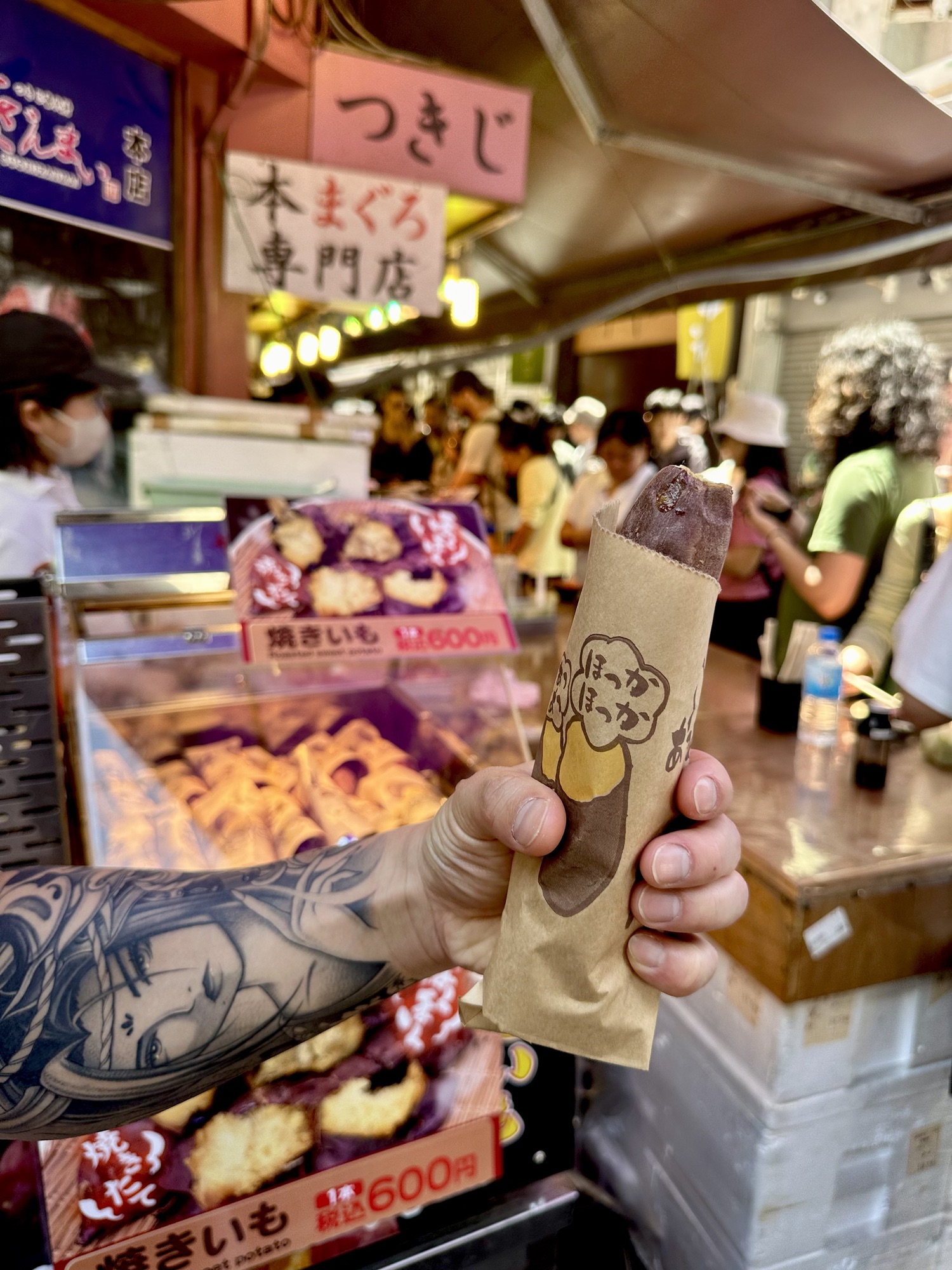
Here are the most popular and highly rated tours of Tsukiji Fish Market, perfect if you wanted to explore its rich history and discover the best places to eat and shop among the market's 400 stores.
🦀 Tsukiji Fish Market Street Food Half-Day Tour with Tasting 🦀
Enjoy this highly rated half-day tour in Tsukiji, where you'll taste fresh seafood, fruits, vegetables, and more while learning about Japanese culinary culture from an English-speaking guide.
🐟 Tokyo Tsukiji Fish Market Private Food Tour 🐟
This private foodie tour of Tsukiji Fish Market, led by a local expert, takes you through hidden gems and popular spots, offering insights into Japanese food, culture, and manners. With 400 shops to explore, you’ll enjoy personalized attention and a unique culinary experience not found in guidebooks.
🍣 Tsukiji Fish Market Tour and Sushi-Making Class 🍣
After a guided exploration of Tsukiji Fish Market, you'll also get to take a sushi-making class at one of Asia's largest cooking schools, where you'll receive a certificate and gift upon completion.

Tsukiji Market: Conclusion
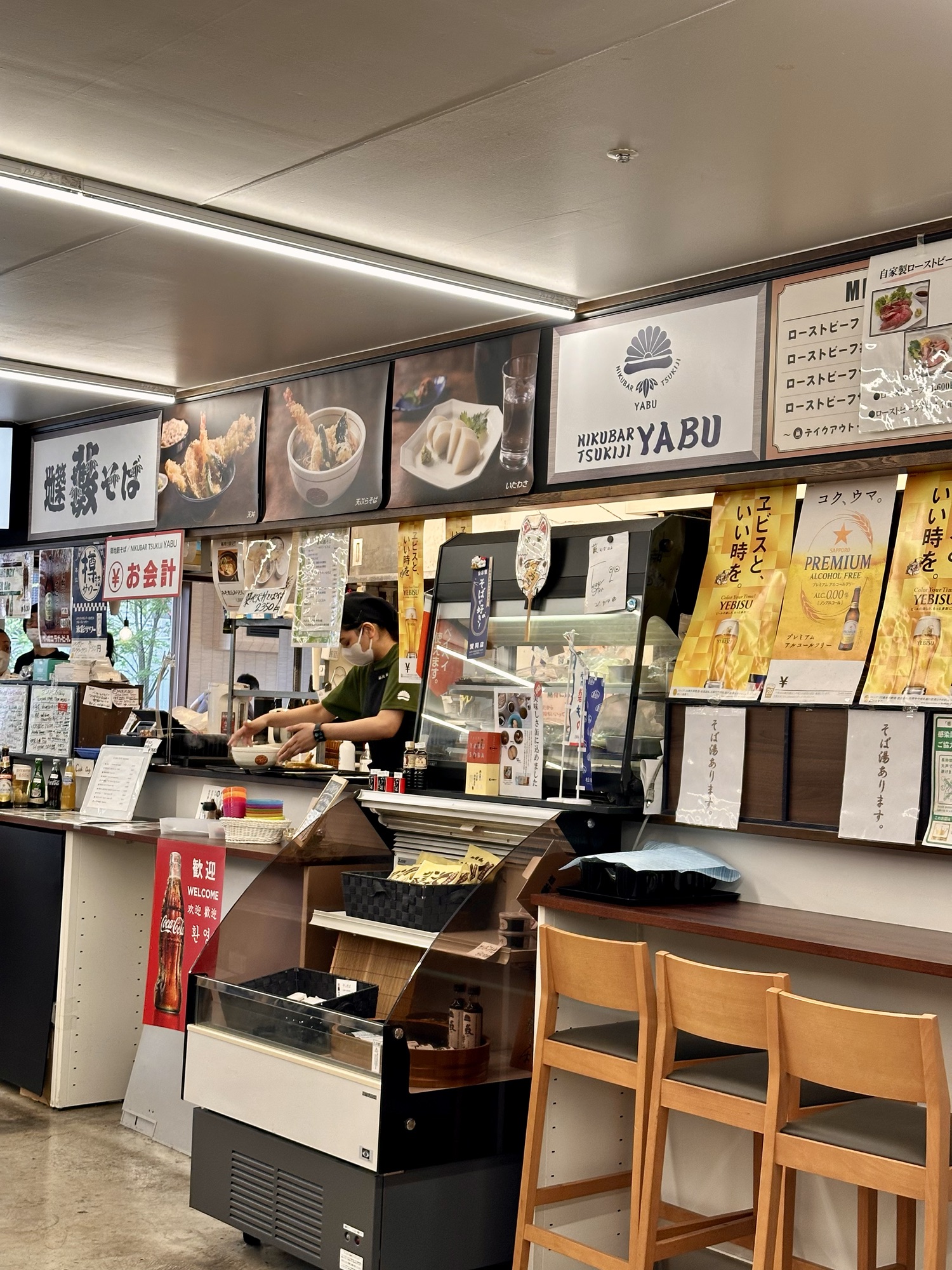
I hope you enjoyed learning about Tsukiji Market and the best time to visit. Some people say Tsukiji Market has lost some of it's charm due to price increases and tourism, but I still find it enjoyable and vibrant.
If you're wondering how to incorporate Tsukiji Fish Market into your trip to Tokyo, I suggest checking out my Tokyo Itineraries that include a stop at Tsukiji Market.
1 Day In Tokyo: The Best 24 Hour Itinerary
How To Have The Best 2 Days In Tokyo: Itinerary
No Better Way To Spend 4 Days In Tokyo: Complete Itinerary
The Most Complete 6 Day Tokyo Itinerary For First-Timers
I hope you have a wonderful time in Tokyo, and if you have any questions or suggestions for me to add to this post, feel free to comment or email me at audrey@getlostinjapan.com.
I love hearing from you, and hope you supply you with the best information for an epic trip to Japan!


